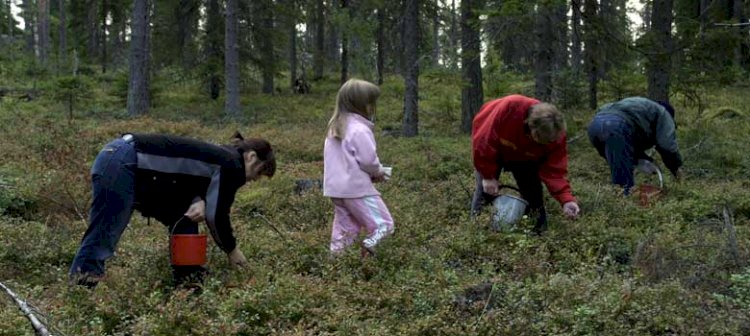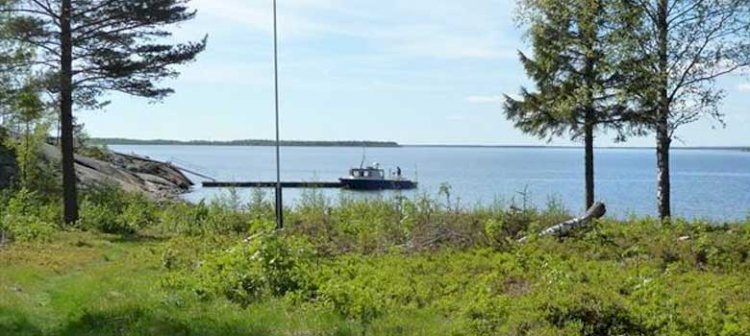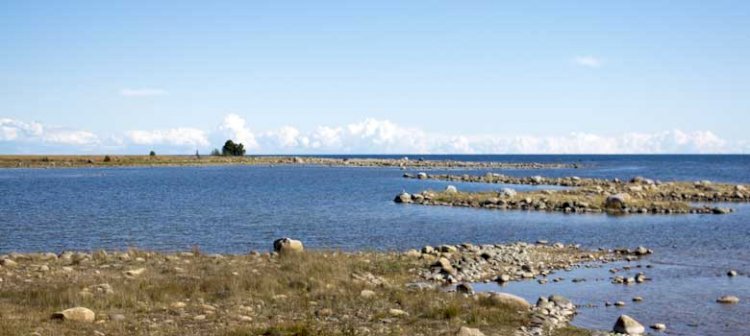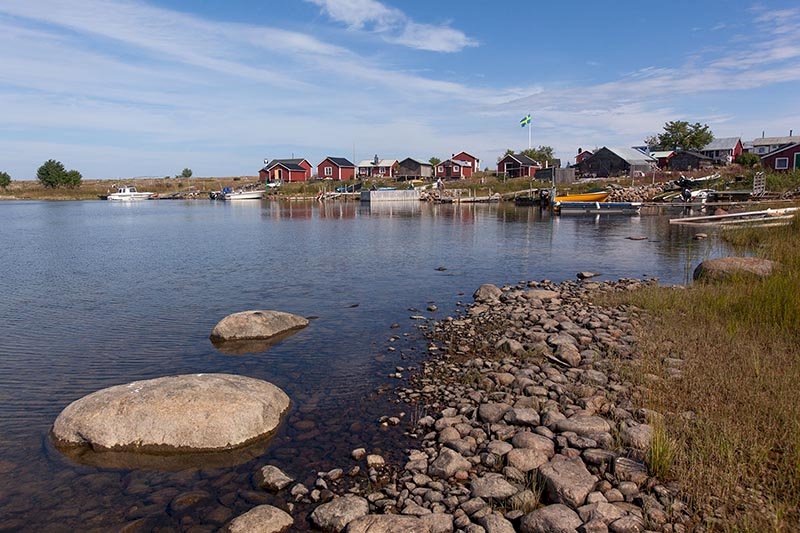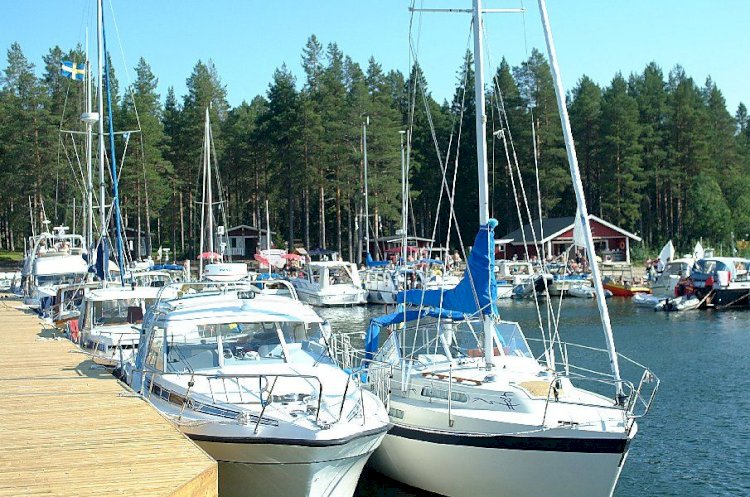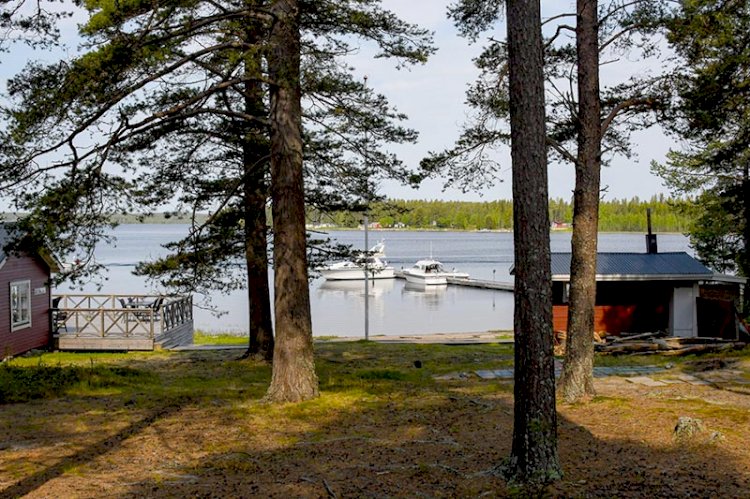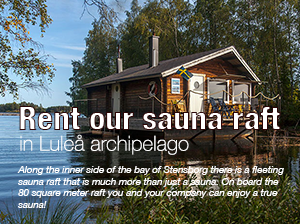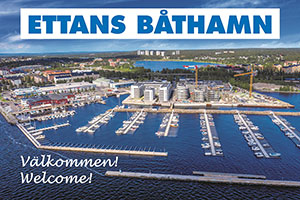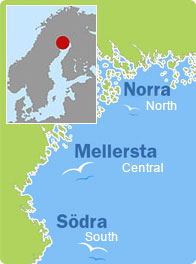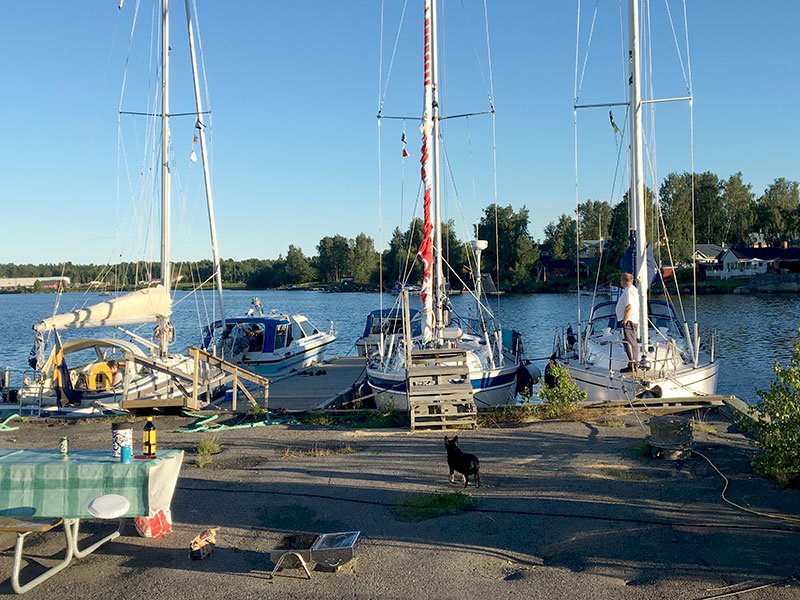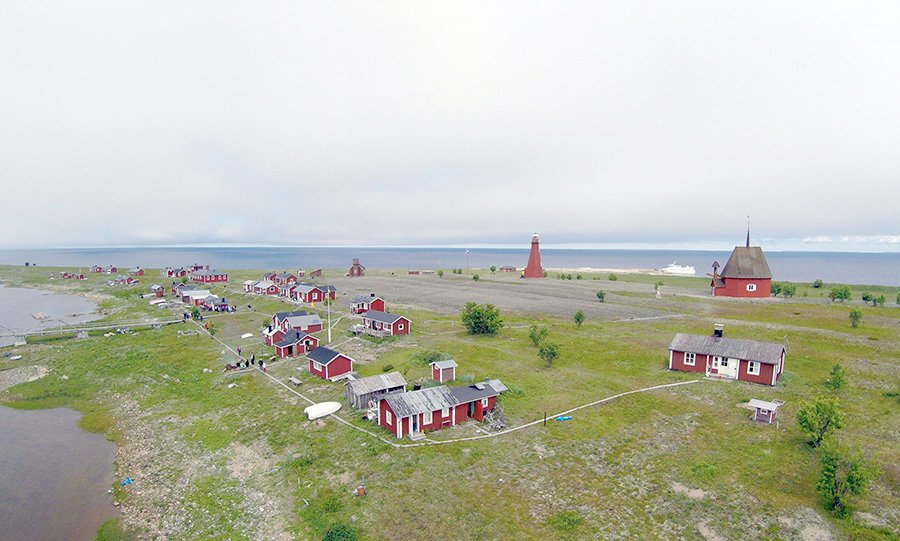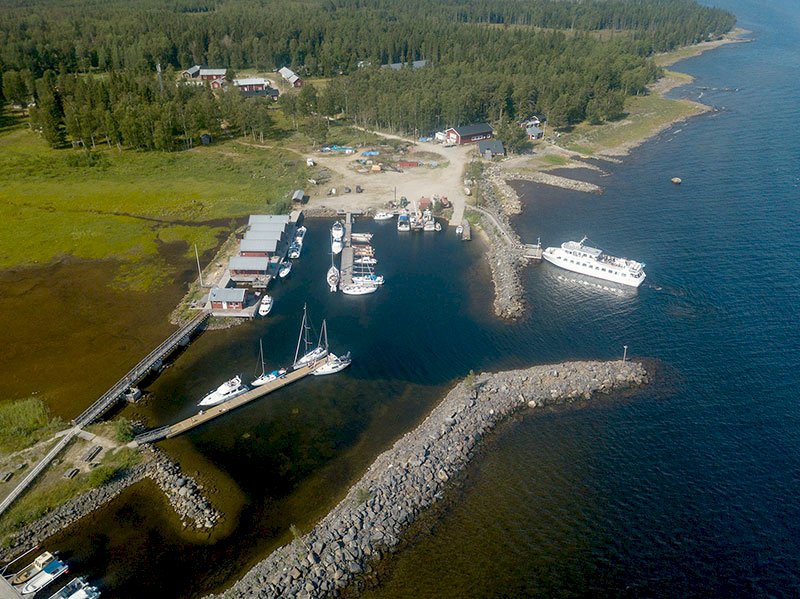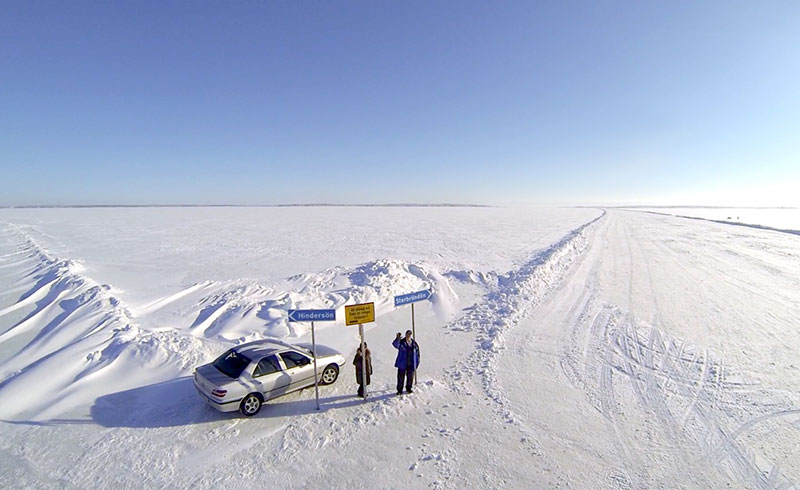Stenskär, Piteå (South)
The glittering lagoon at Stenskär, with its long sandy beach, attracts many visitors looking for a great spot to swim.
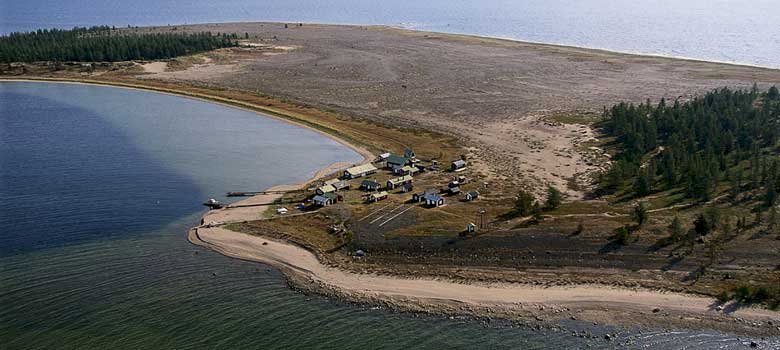
The island has a rich birdlife, the remnants of ancient labyrinths and, at the head of the bay, a picturesque fishing village with red-painted fishing cabins.
Facts
Guest harbour/ nature reserve
Nautical chart 415, harbour depth: 3 m, no. of guest berths: about 25
Tour boat, outhouse toilet, fireplace, bathing, wind shelter, sauna, observation tower, hiking trail, information and attractions.
Make your approach on course 149o. You are now on the way straight into the bay at Stenskär. The water is at least 6 metres deep up to 0.1M from the shoreline. The harbour depth is 3 m, and there are 25 guest berths. Mooring with anchor. The harbour is managed by the municipality of Piteå’s culture and recreation department, and there is no harbour fee. Access to sauna and outhouse toilet. The natural harbour provides shelter from all winds apart from north-westerly winds, which can be quite troublesome.
Fishing
For a long time now, Stenskär has been used by fishermen. The stone remnants from old cabins or huts, and a “gistgård” (a wooden structure used to hang and dry fishing nets) bear witness to the importance of the island for the region’s fishing industry a long time ago. The present day fishing village, with ten cabins, is located on the south-western side of the island. As the land elevation has risen over time, the fishing village has always been moved to a new location nearer the water. These days there is no fishing village that is used solely for fishing. The remaining cabins are now often used for recreational purposes.
Mystical labyrinths
There are an unusually large number of labyrinths on Stenskär. There are a total of about 300 known labyrinths in Sweden; a third of them are located along the coast of Norrbotten, and a number of them can be found on Stenskär. For thousands of years, people have positioned stones in labyrinth formations. Such a tradition existed in the Mediterranean over three thousand years ago. Along the coast of Norrland, however, the labyrinths usually date from the late Middle Ages (12th to 16th century).
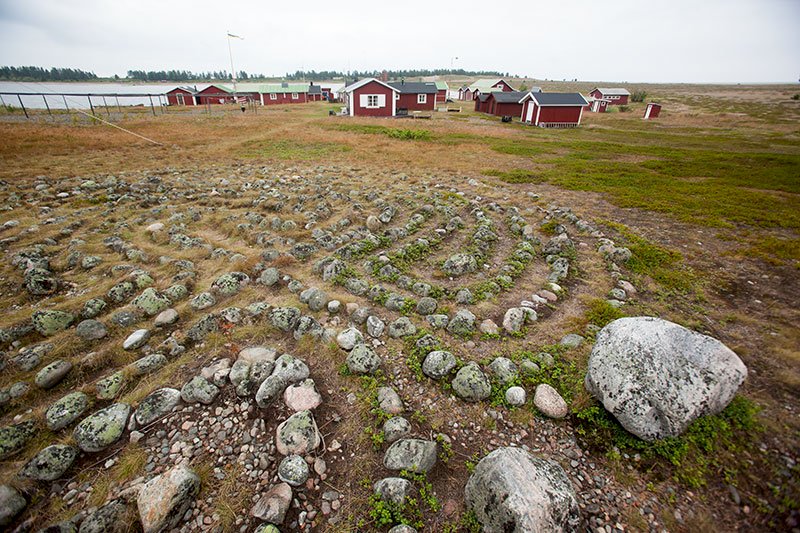
The labyrinths on Stenskär were formed during the 19th century, evidence of the fact that the tradition seems to have lived on longer on this island. But the reason why the labyrinths were formed is still not known with any certainty, and their purpose appears to have been lost with time. However, we do know that they were always formed near the coast, and often close to the old fishing villages. Possible explanations include people building the labyrinths in order to ward off bad weather, or to improve their fishing fortunes.
In addition to the labyrinths, there are also compass roses on Stenskär. They point out in all four directions and are also to be found close to the sites of the fishing villages. One is located by the abandoned former fishing village at Lill-Sandknösarna on the south-western part of the island.
Stenskär is one of Piteå’s most visited islands. During the summertime, the island’s beaches are fantastic spots for swimming and sunbathing, and the ancient relics provide visitors with exciting voyages of discovery.
Please remember!
The natural and cultural environment on Stenskär is very valuable, but it is also very sensitive. Consequently, everyone who visits or stays on the island has a great responsibility to ensure that these values are not lost. So please be careful and make sure you don’t dislodge or remove the stones that are part of the remnants, for example. All the relics on the island are protected under the Swedish Heritage Conservation Act. Furthermore, the island is protected as a nature conservation area. Please take care to keep to the walking tracks that already exist, and to only light fires at the designated places.
In Jävre, which is located on the nearby mainland, you will find the Archaeology Trail, a pleasant hiking trail that follows in the footsteps of our forefathers.




